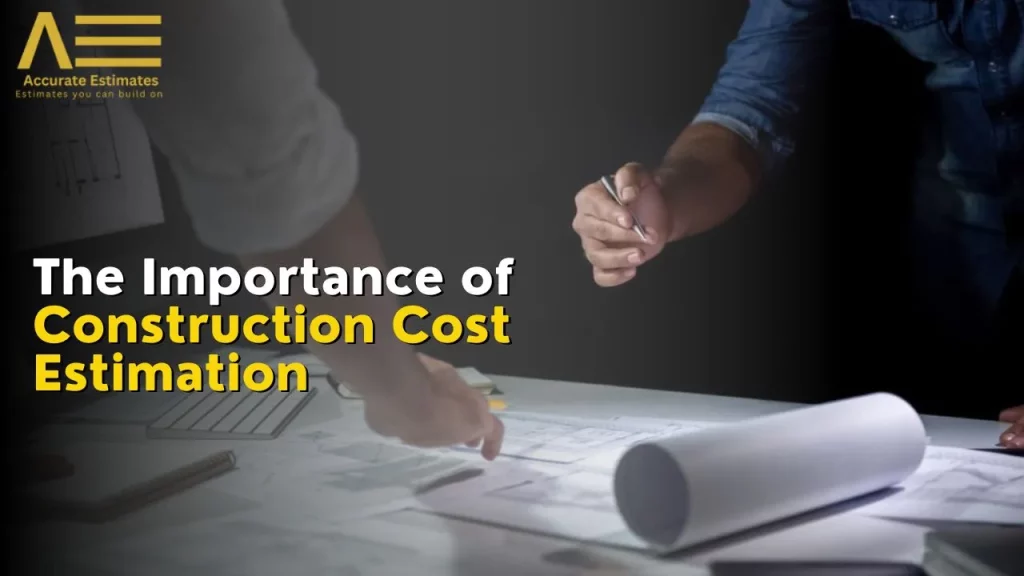What are the 4 Pillars of Estimation?

Introduction
Construction estimation is crucial in project success by predicting costs, timeframes, and resource requirements. This article explores the four pillars of estimation, which are which are essential for effective planning and project management.
Understanding Construction Estimation
Construction estimation is the process of forecasting project costs and resources. It helps stakeholders make informed decisions, avoid financial losses, and ensure project completion on schedule.
The Importance of Accurate Estimation
Cost estimation is important for project feasibility, profitability, and client satisfaction. It prevents cost overruns and delays, enhancing the overall project experience.
Pillar 1: Quantity Takeoff
– What is Quantity Takeoff
Quantity takeoff is the initial step in estimation, involving itemizing all materials required for construction. A detailed understanding of the project’s design and specifications is crucial for accurate takeoff.
– Techniques for Quantity Takeoff
Estimators use manual takeoff, unit cost estimating, and assembly-based estimating techniques. Each method has its merits, suited for different project scenarios.
– Software Tools for Quantity Takeoff
Modern technology offers software tools that streamline and expedite quantity takeoff. These tools enhance accuracy and efficiency in the estimation process.
Pillar 2: Cost Estimation
– Components of Cost Estimation
Cost estimation encompasses direct (materials, labor, equipment) and indirect (overhead, permits, taxes) costs. A comprehensive understanding of all cost components is essential for precise estimates.
– Factors Affecting Cost Estimation
Market conditions, economic fluctuations, labor availability, and project complexity influence cost estimation. Considering these factors ensures realistic and reliable estimates.
– Best Practices in Cost Estimation
Industry best practices include using historical data, benchmarking, and cost databases for accurate estimation. Regular cost analysis and updates throughout the project maintain accuracy.
Pillar 3: Time Estimation
– Approaches to Time Estimation
Time estimation involves determining the duration of each construction activity and the overall project timeline. Historical data and project scope aid in gauging time requirements.
– Considering Project Constraints
Time estimation must account for potential constraints like adverse weather, resource shortages, or unexpected challenges. Integrating these variables into the estimation process results in realistic timelines.
– Tools for Time Estimation
Project management software and scheduling tools assist in time estimation, creating detailed timelines, and tracking progress.
Pillar 4: Risk Management
– Identifying and Assessing Risks
Risk management involves identifying potential risks that may affect project success. Estimators analyze historical data, industry trends, and project intricacies to identify pitfalls.
– Strategies for Risk Mitigation
Construction professionals implement contingency planning and and contract clauses to minimize risk impact and collaborate with experienced contractors.
– Integrating Risk Management in Estimation
Incorporating risk management in the estimation process allows for better preparation and decision-making. Estimators assess the likelihood and potential impact of risks, enabling proactive responses.
Estimation Services in New York
At Accurate Estimates, we provide construction estimating services in NYC. Our expert team is dedicated to delivering accurate and reliable estimates and helping clients plan and execute successful construction projects. With a deep understanding of the local market and industry best practices, our estimation services are tailored to meet the unique needs of each project.
Also read: Strategies to win construction project
Conclusion
Accurate construction relies on four pillars of estimation – quantity takeoff, cost estimation, time estimation, and risk management. Embracing technology and best practices empowers construction professionals to succeed in their projects.
FAQs
1. What is construction estimation?
Construction estimation predicts project costs and resources, aiding effective planning and management.
2. Why is accurate estimation crucial?
Accurate estimation ensures project feasibility, profitability, and client satisfaction, avoiding cost overruns and delays.
3. What is quantity takeoff?
Quantity takeoff involves itemizing all materials needed for construction.
4. How can technology assist in estimation?
Technology offers software tools that streamline and expedite the estimation process, enhancing accuracy and efficiency.
5. What factors influence cost estimation?
Market conditions, economic fluctuations, labor availability, and project complexity impact cost estimation.
6. How can time estimation account for constraints?
Time estimation must consider potential constraints like adverse weather or resource shortages.
7. What is risk management in estimation?
Risk management involves identifying potential risks and implementing strategies for mitigation.
8. Why is integrating risk management crucial in estimation?
Integrating risk management allows for better preparation and decision-making, ensuring project success even in challenging situations.


